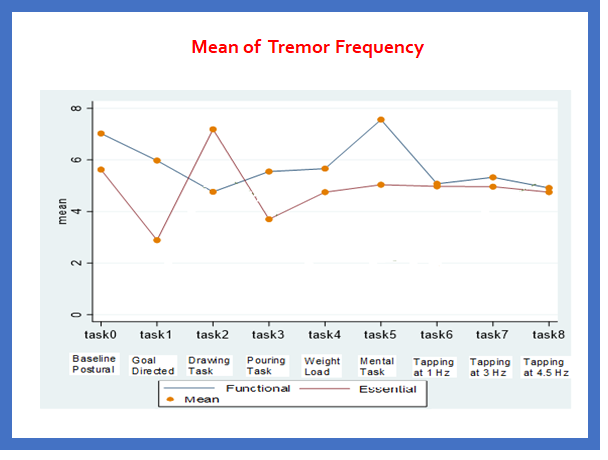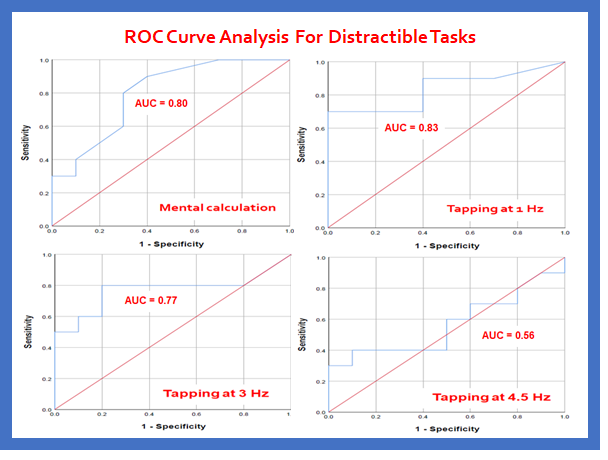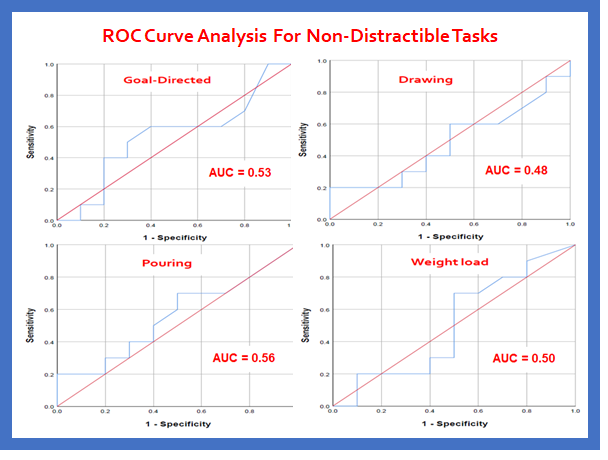Session Information
Date: Monday, September 23, 2019
Session Title: Functional (Psychogenic) Movement Disorders
Session Time: 1:45pm-3:15pm
Location: Les Muses Terrace, Level 3
Objective: The aim of the study was to determine if a smartphone accelerometer can distinguish functional tremor from organic tremor.
Background: Differentiating functional tremor from tremor due to other causes can be very challenging on clinical grounds. Portable transducers such as accelerometers can be used to assess tremor repeatedly, with no additional cost, can provide precise linear measures of tremor, and may be of value to physicians without experience in rating tremor.
Method: This was a prospective case-controlled study, in which 10 patients with functional tremor were compared to 10 patients diagnosed with essential tremor. The tremor was recorded using the in-built triaxial accelerometer of a Samsung mobile phone. Recording was performed in the following states; while maintaining a posture of extension of the most affected hand (baseline), while performing a goal-directed task, with a 1 Kg mass attached, while drawing a spiral, during pouring, while performing a mental task (serial 7 subtraction), and while performing tapping tasks with the contralateral hand in time with a metronome at rates of 1, 3, and 4.5 Hz. Tremor recording was for 30 seconds for each task. Recorded data were processed using MATLAB program. A fast Fourier analysis of the signals was performed to define the peak tremor frequency for each task. Tremor frequency shift from the baseline was calculated for each task for each subject. Subsequently, a ROC curve was performed for each task and the optimal cut-off value was determined.
Results: A ROC curve analysis of “Tremor frequency shift from the baseline” revealed that the tapping at 1 Hz task had the highest diagnostic accuracy, with an area under the curve of 0.83, whereas the drawing task had the lowest diagnostic accuracy, with an area under the curve of 0.48. The results showed that distractibility tasks had better diagnostic accuracy compared to non-distractible tasks (goal-directed, weight loading, drawing and pouring). Combining the distractible tasks together (mental calculation, tapping at 1 Hz and tapping at 3 Hz) resulted in better diagnostic accuracy, with 80% sensitivity and 90% specificity.
Conclusion: Smartphone accelerometer is a simple, accessible and cost-effective method to distinguish functional tremor from organic tremor in daily clinical practice and can be useful in environments where more sophisticated diagnostic techniques are unavailable.
To cite this abstract in AMA style:
M. Khider Ahmed, T. Mouton, J. Ackerman, N. Brey, C. Albertyn, F. Henning, J. Carr. Can a smartphone accelerometer differentiate between functional and organic tremor ? [abstract]. Mov Disord. 2019; 34 (suppl 2). https://www.mdsabstracts.org/abstract/can-a-smartphone-accelerometer-differentiate-between-functional-and-organic-tremor/. Accessed December 26, 2025.« Back to 2019 International Congress
MDS Abstracts - https://www.mdsabstracts.org/abstract/can-a-smartphone-accelerometer-differentiate-between-functional-and-organic-tremor/



